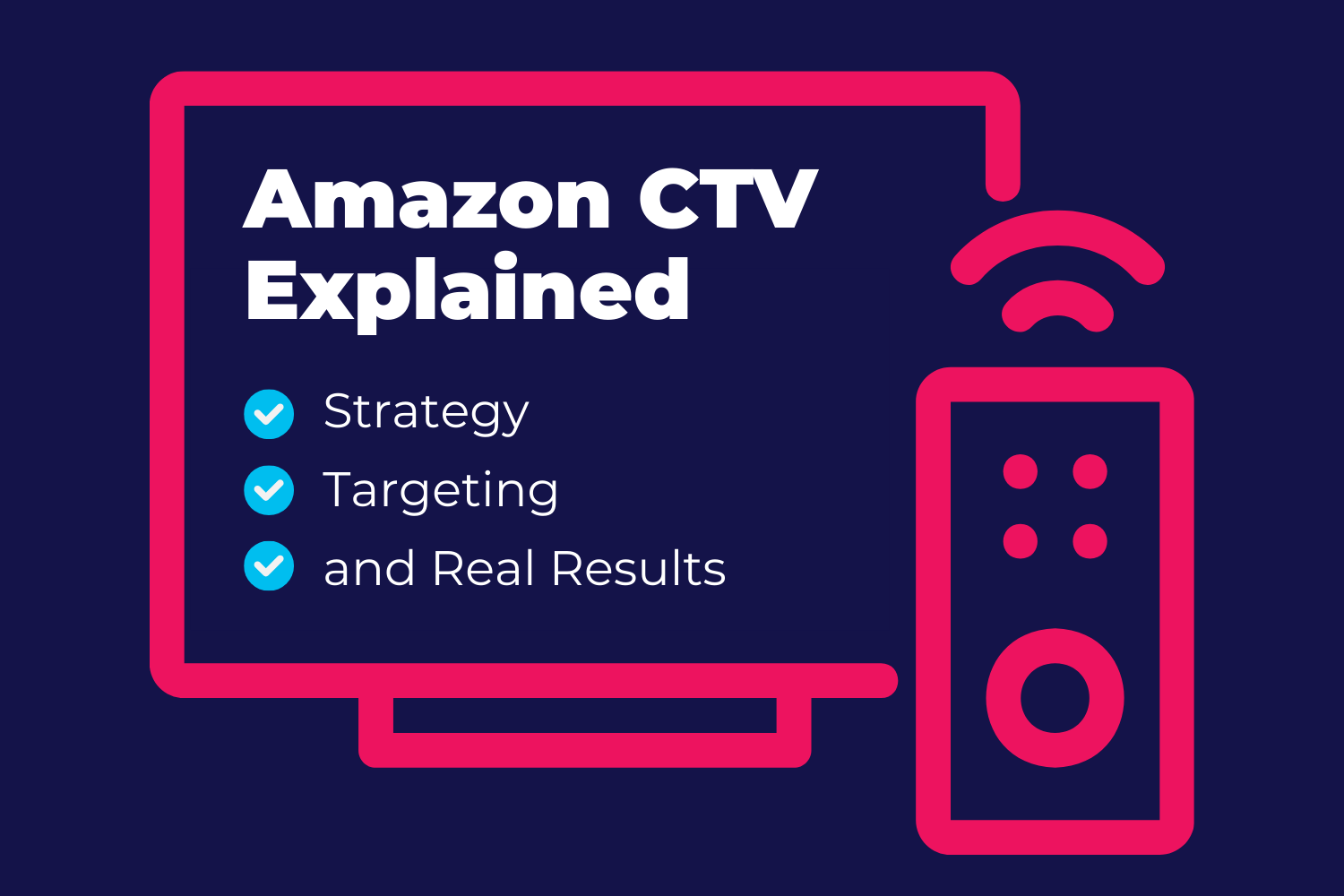Positioning in Digital Marketing: How it Works + Why it Matters
| Pathlabs Marketing |
| June 13, 2023 |
CONTENTS
It is time for a quiz: what are the four P’s in marketing? Just kidding. In this blog, we will discuss a different ‘P’ in marketing: positioning.
It’s a fact that brands have a lot of competitors and substitutes to their offerings working against them to attract users. So, they must find a way to differentiate themselves and hold market share.
Positioning is a way to do this. In this blog, we will discuss what positioning is in a digital marketing context, why it is important, and some elements and examples to remember when positioning your brand.
What is Positioning in Digital Marketing?
Positioning in digital marketing is a strategic process that shapes how a brand is perceived by its target audience, distinguishing it from competitors. It involves crafting a unique identity and value proposition to establish a solid and differentiated presence in the digital landscape.
In the simplest terms, it is determining the desired place and perception of the brand within a specific market while aligning its offerings with target users' ideas, emotions, and needs.
“Positioning in digital marketing allows a business to present its identity to the defined audience at the right time and place.”
Why is Positioning Important in Digital Marketing?
Positioning in digital marketing is essential because what a brand offers only sometimes corresponds to and resonates with the audience they want to target. Additionally, these brands can face many competitors offering similar products or services, making it hard to stand out.
So, these brands need to tailor their marketing to position themselves in a way that makes them stand out and demarcate their offerings as superior or different from other options.
Let’s look at a few examples to understand this need. Nike is always great to refer to. In its simplest form, Nike is a clothing company. However, nobody would probably engage with it if it positioned itself as “the clothing company”.
So, with data and lots of customer exploration, Nike has identified a market of sports enthusiasts and athletes seeking specialized apparel.
Therefore, they have taken their core offering, clothes, and crafted an identity around the company to resonate in users' minds in a specific way. In this case, they have modern sports designs, collaborations with top athletes, and a concise “Just do it” slogan – encapsulating their target audience's ambitious and fanatic connection to sports, wanting to be the best.
Similarly, Walmart, in simplest form, is a grocery store, but it has found a target audience of consumers who demand low prices and quantity. Consequently, Walmart's positioning is a budget-friendly option helping consumers "Save Money, Live Better.”
Alone, Nike and Walmart are just companies selling products; however, with their positioning, we users perceive them in a certain way, giving them a flare that makes them more memorable.
Benefits of Strategic Digital Positioning
Taking the time to conduct strategic positioning is beneficial because it allows the brand to differentiate itself. This is one of the most challenging things to do, especially in industries with very similar and generic offerings like insurance or software.
Whether the differentiation factor in the positioning is price, benefit, competition, or something else, if the marketer can harness and evoke it consistently, users will have it more readily available in their minds – propagating future engagements.
“Going about positioning can also be a fantastic exercise in the field of customer discovery, target audience development, and goal setting. A ‘we have a little bit for everybody’ approach does not work these days, and a team’s goals get lost too often as the campaign strategy moves through execution.
“Going about positioning can also be a fantastic exercise in the field of customer discovery, target audience development, and goal setting. A ‘we have a little bit for everybody’ approach does not work these days, and a team’s goals get lost too often as the campaign strategy moves through execution.
By slowing down and asking the right questions through positioning, marketers can quickly realign their focus towards supporting the brand’s mission and making the right decisions to meet the business objective and target audiences.”
A final benefit of positioning is that marketers foment enhanced customer loyalty. Look at the company REI, for example, which has many rivals that provide outdoor products like Cabelas, Scheels, and Sportsmans Warehouse.
REI stands out to many because it specifically positions itself as an outdoor enthusiast-oriented company, standing to celebrate ‘wild, untamed, and natural places.’ This resonates with users who enjoy the outdoors and sports. While for those wanting to get more into these activities, seeing the explicit positioning of REI wanting to lead this industry, pulls them in as a strong option, driving them deeper into the REI funnel.
Types of Digital Marketing Positioning
There are various ways in which digital marketers can demarcate and position a brand; five important ways to consider and lean into are quality, price, benefit, solution, and competitor positioning.
Quality Positioning
Quality positioning emphasizes the overall quality and value of the brand's product or service.
For example, Avis Car Rental likes to reiterate that they rent out high-quality cars, targeting customers who value service and experience while not worrying as much about price.
Price Positioning
Price positioning highlights the competitive pricing of the brand's product or service.
Budget Car Rental, for instance, positions itself based on affordability, targeting customers looking for cost-effective rental options.
Benefit Positioning
Benefit positioning showcases the brand's unique offerings that other options don’t have.
For example, Airbnb positions itself as the option that provides users with special perks like themed stays, communal options, and amenities like hot tubs and saunas – beating out standard hotels.
Solution Positioning
Solution positioning emphasizes how the brand's products or services can solve specific user pain points and challenges, highlighting the brand's ability to address customer needs effectively.
An example from Chron. is selling frozen chopped vegetables: brands can position this as a remedy to wasting time buying and chopping individual vegetables.
Competitor Positioning
Brands utilizing competitor positioning aim to differentiate themselves by highlighting their superior offerings against competitors.
Pepsi and Coca-Cola have been long-time prime examples of competitor positioning due to many mutual ad campaigns trying to poke fun at or diminish the other’s brand's value – deeming it the inferior option.
Elements of an Effective Digital Positioning Campaign
Positioning Requires lots of Planning.
Planning is essential to building a strategic position, and teams must know this beforehand. They must think about their current position in the market, map out how audiences currently perceive them, and narrow down who to target.
Doing so includes extensive research identifying strengths, weaknesses, and opportunities for improvement via conversation amongst the team, customer feedback, external research, and data analysis.
Although this is a lot of work, understanding this identity piece of the brand is the cornerstone of the planning process. From this, the team can more easily determine the language, media, methods, and channels to use and target users.
Look to Competitors
Study competitors' positioning strategies to gain insights into their unique selling points, target audience, and market positioning. Use this information to differentiate the brand and identify areas of competitive advantage.
Lean into Passion
Tap into the passion and values that drive the brand while also thinking about the driving forces or impulsions that may incline a user to interact with it. Align the positioning strategy with core beliefs and purpose, connecting with customers emotionally.
Develop Positioning Statement
Craft a concise and compelling positioning statement that communicates the unique value proposition of your brand. This statement should clearly articulate what sets your brand apart and why customers should choose you over competitors.
Iteration and Consistency
Understand that positioning is an ongoing and iterative process. Regularly evaluate your positioning strategy's effectiveness, gather customer feedback, and adapt your approach as needed to stay relevant and resonate with your target audience.
Stay True to Mission and Understand User Path
“Marketers must stay true to their mission to confidently build a strategy that generates results corresponding to business goals. In return, this provides opportunities to create thoughtful insights into how the target user responds to the brand and ways to improve its position in the industry.
Without having this core understanding is like moving with blinders on, making it almost impossible to reach our destination. By some luck, if we do get there, we won’t fully understand how we got there and what we can do to make that path more efficient.”
Examples of Effective Positioning
Patagonia
Patagonia stands for climate activism and clothing that is sustainable yet durable into the future.
Differentiating and positioning itself as the action-oriented, conscious brand that tailors to outdoor, climate, and mid to upper-class consumers has created die-hard customers for the company that buy everything Patagonia.
This positioning makes Patagonia stand out compared to competitors with less of a stance on these social topics.
Beautycounter
Beautycounter is perhaps the equivalent of Patagonia in the makeup world. The company strives to distinguish itself from its competitors by having environmentally friendly products, therefore making the company set the “cleanest standards in beauty.”
This positively counters companies that position themselves as the leaders in quality or price – yet don’t conduct sustainable practices.
Mission Mountain Winery
Mission Mountain Winery has found its niche and positioned itself as a ‘Made in Montana’ brand selling small batches of wine with Montana-specific flavors like huckleberry and Flathead cherry.
The identity this brand has for users evokes rarity and even a nostalgic feeling for those from Montana or who have visited.
This clearly stands as the quality option compared to a boxed wine from Costco.
Overcoming Potential Challenges
Market Saturation & Lack of Differentiation
In highly competitive markets, finding a unique positioning that sets a brand apart from numerous competitors offering similar products or services can be challenging.
According to the CEO of Target Internet, a way teams can curb this challenge is to refer back to the brand’s mission statement and combine it with data-driven strategic insights, indicating the strategic position the company should pursue. Upon this, the team can continue to optimize their position until they find the right niche.
Competitive Pressure and Shifting Consumer Preferences
Consumer preferences and market trends can change rapidly, making it difficult for brands to adapt their positioning strategies to stay relevant and meet evolving customer needs. Competitors may also adjust their positioning strategies, making it necessary for brands to continually monitor and analyze the competitive landscape to maintain a competitive advantage.
To solve this, teams must have an internal and external focus when collecting and analyzing data. They need to find ways to record real-time insights on their performance and consumer preferences, as well as look at what competitors are doing to stay caught up.
Inconsistent Messaging
Message inconsistency across various marketing channels can dilute the brand's positioning and confuse the audience. Lack of alignment in messaging can lead to mixed perceptions and weaken the brand's overall positioning strategy.
A pre-established set of mission and positioning statements, brand guidelines, and a unified value proposition can serve as this base teams should refer back to when crafting any campaign. This allows them to ensure they are tying back to the business goals at every step of planning and execution.
Misalignment with Target Audience or Campaign Objective
“There is always a challenge of vision loss when teams pass strategies from one hand to another: campaigns may reach a point where the business goal gets diluted, and the focus is instead now on how to execute.
This becomes even more apparent as clients and teams refer to performance results that do not support the goal. To make the goals and execution move in the same direction, teams must position themselves to ask the right questions, understand the core business challenges, and strategically think through the campaign goals, delivering insights and recommendations that help improve the defined objective.”
Lack of Flexibility
Positioning strategies should be adaptable to changing market conditions and customer preferences. A rigid positioning approach may hinder the brand's ability to respond to new opportunities or address emerging challenges.
As mentioned, positioning is to be iterated; it is not static, and teams must revisit the topic occasionally to ensure they are still viable.
In Conclusion
The importance of positioning cannot be overstated when running effective campaigns. Teams in all industries and organizations must consider their unique voice, image, and identity to stand out and create a lasting impression on their target audience.
Especially at Pathlabs, our approach concerning positioning isn't just about simply running media execution. It is about understanding a brand's essence and value to an audience, then figuring out the best way to present and deploy this essence and value to capture their attention.










